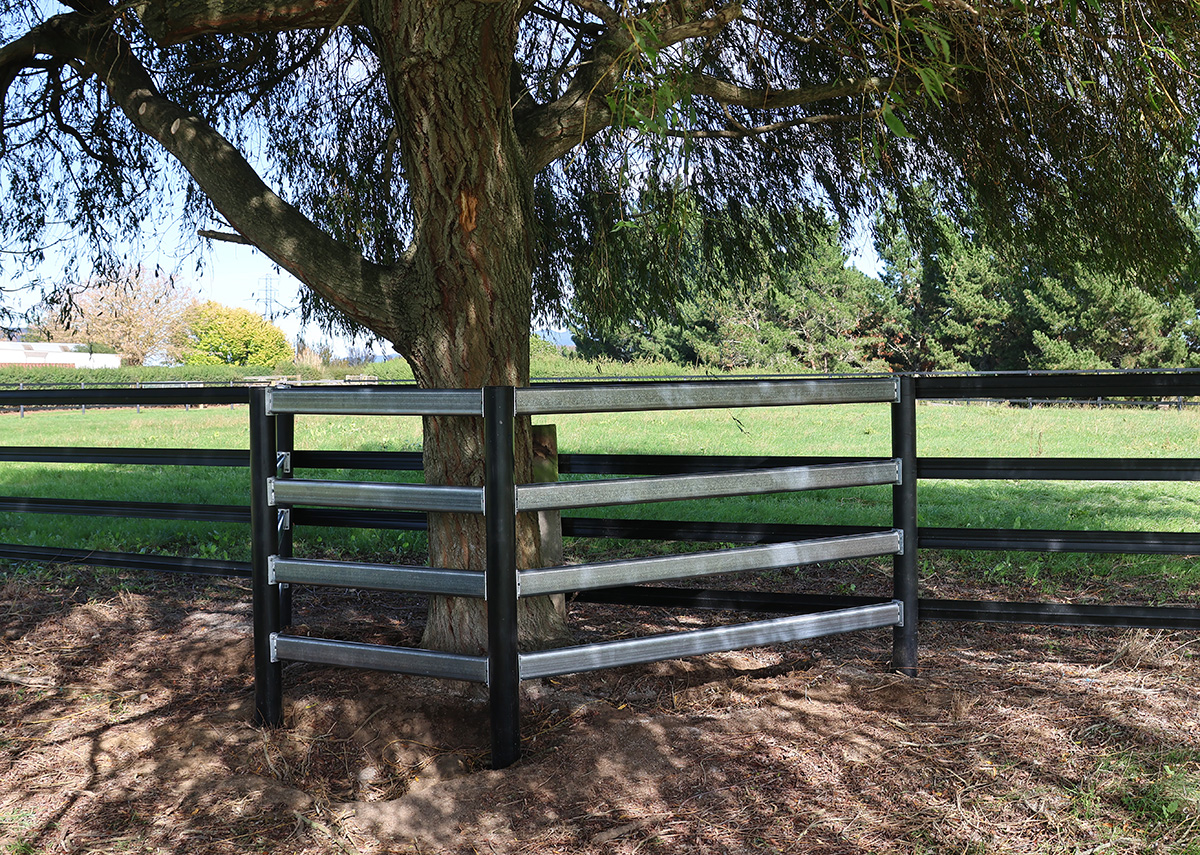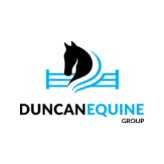Fencing Around Trees? Here’s What to Consider
Trees bring so much value to a horse property, whether it’s a lone gum tree offering summer shade or an entire shelterbelt protecting paddocks from wind and sun. However, when it comes to fencing around trees, a poorly installed setup can result in damaged trees, unsafe corners, and fencing that doesn’t last.
So, how do you strike the right balance between horse safety, tree health, and durability? It all starts with knowing your layout and planning accordingly.
Fencing a Single Tree or Small Group
Got a lone tree in a paddock? A small cluster you’d like to preserve?
In this case, you can keep things simple while still protecting both horses and timber.
We recommend treating the fence design like a continuation of your regular paddock fencing. For example, if you’re using a 3-rail steel paddock fence, just replicate that around the tree zone.

Why Steel?
Steel is tough, chew-proof, and resistant to rot, making it a better long-term solution than timber in areas where horses might rub, chew, or lean. It also maintains its shape around uneven ground and can be installed cleanly around tree roots without disturbing the area excessively.
Pro Tip: Keep the fence set back at least 1.5 metres from the trunk to protect the tree’s root zone and allow space for natural growth.
Fencing Larger Tree Lines or Shelterbelts (60m or more)
If you’re fencing off a long tree line, like a windbreak or plantation, the approach is slightly different. This is where Stallion Rail really shines.
Made for larger runs, Stallion Rail is low-maintenance, extremely safe, and highly visible—perfect for long fence lines where horses may gallop, turn sharply, or drift into the trees.
However, before you install, consider how you’ll power the fence.


Distance vs. Power Supply
If your tree belt is far from the main electric supply, running power all that way might not be practical—or affordable. That’s where solar energisers come in handy. They offer an easy, independent power source, ideal for isolated lines or remote parts of your property.
A well-placed solar unit can keep the line hot without the hassle of trenching wires or relying on battery swaps.
Designing for Horse Movement
Here’s one of the most overlooked aspects of tree fencing: the shape of the fence line.
Horses, especially in groups, don’t always move with grace and caution, particularly when excited, playing, or startled.
Sharp corners or sudden turns in a fence line can become collision hazards. This is especially true in paddocks shared by multiple horses.
The safer solution? Use curved or bevelled corners. These reduce hard angles, allowing horses to flow through the space more naturally, cutting down the risk of injury and improving herd dynamics.
Final Thoughts: Plan with Purpose
Fencing done well, it becomes part of a long-term strategy that:
- Preserves natural shade and wind protection
- Prevents chewing and rubbing damage
- Creates safer, more horse-friendly paddocks
- Reduces the need for future repairs or fence failures
Why Choose Duncan Equine?
At Duncan Equine, we understand fencing is an investment, not just in materials, but in the future of your property. That’s why we offer expert advice, durable products like our Stallion Rail, hot dip galvanised steel, and tailored fencing solutions for even the trickiest paddock layouts.
From planning your fence line to choosing the right energiser, we’re here to help every step of the way. Contact us now for help planning your property









